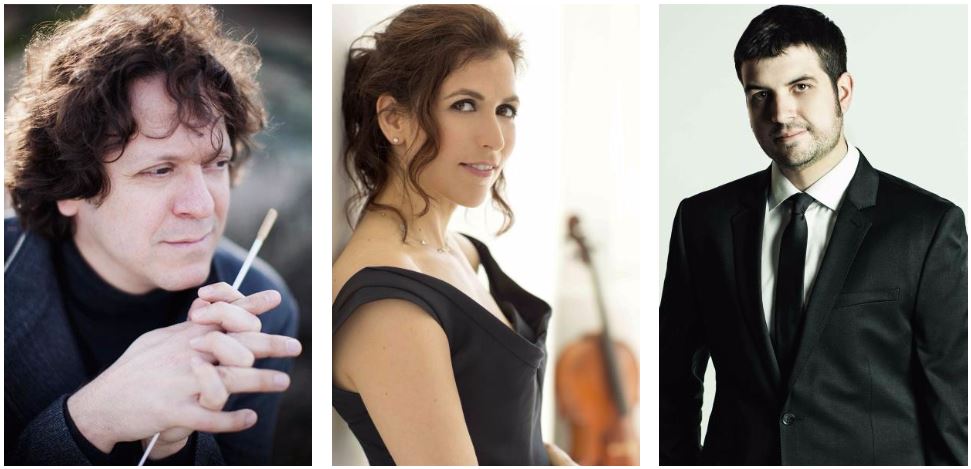
POSTMODERN IMPRESSIONS OF OLD FOLK SONGS
WALNUT CREEK, CA—For 30 years the California Symphony has served as a musical beacon for Contra Costa County, located nearly 30 miles east of San Francisco. And its programs are ambitious, often on the very limits of what can be comfortably carried out and absorbed.
The May 7 season finale featured not only the elusive lush-romantic Bruckner, but also a world premiere by composer-in-residence Dan Visconti, 34, from Chicago. Visconti’s 25-minute cello concerto “Tangle Eye”—his third work written for this ensemble—circles back from his multimedia interests to a more conventional three-movement, non-electronic concept in which the cellist is playing virtually nonstop. This is a virtuosic part as the soloist traces free variations on different folk songs: “Black Is the Color,” “Shenandoah,” “Tangle Eye Blues.” But it’s no rocking-chair treatment: The high cello lines will clash fiercely with the orchestra in whirlwind fashion, while in the “Tangle Eye” finale the cello pizzicatos (plucked strings) mimic a blues guitar, with sliding tones and all—a unique touch. In between “Shenandoah” flows through in flood stage, immersed in the cello’s demanding double stops.
The work could have been subtitled postmodern impressions of timeless folk songs.
Visconti does some fascinating pairings, like a duet of cello with drum. But his work lacks a lucid sense of direction and structure, ending up as a showpiece for the solo cello more than as a fully viable concerto.
The soloist was the Israeli-American Inbal Segev, playing an exhausting part with minor slipups, mostly in the highest register. She redeemed herself in the encore with a sterling solo rendition of the Sarabande, from the Bach Suite No. 3.
The final work, Bruckner’s effusively romantic Symphony No. 6, was not a good choice. The stage size (and perhaps budget) would not allow the oversize forces needed for Bruckner; if the strings sounded thin, it was in part because the 50 or so strings were about a dozen less than used in orchestras of Bruckner’s Austria. Also the conductor needs to abandon all the decorum and throw himself willy-nilly into the captivating, sugary fray. While Music Director Donato Cabrera (formerly a resident conductor with the S.F. Symphony) cues extensively and maintains a tidy baton beat, he is both cautious and wary, far too restrained for this maelstrom of lush sound pouring out of a 58-minute dose of orchestral intoxication.
The nine Bruckner symphonies however have a unique attribute: as Anton Bruckner was first and foremost a dedicated church organist, you can spot in his orchestration the moments when he, in effect, “changes keyboards” or abruptly “pulls out new stops” (like bringing in the full brass section, loud and strong). There are even built-in pauses, as if the organist has more extensive changes of registration than space and time allowed.
The orchestra is game and animated. Its best components lie in the flawless brass section.
MUSIC NOTES—The concert at the Lesher Center had opened with the tempestuous Beethoven “Coriolan” Overture….Visconti was closing out a three-year residency here, having created a new work for the CSO each year…
RUNNING THE BASSES—While in many halls the double basses can barely be heard, here the whole group is atop the risers, fully visible and audible.
California Symphony under Donato Cabrera, the Bruckner-Visconti season finale May 7, at the Lesher Center, Walnut Creek. For CSO info: (925) 945-7469, or go online.